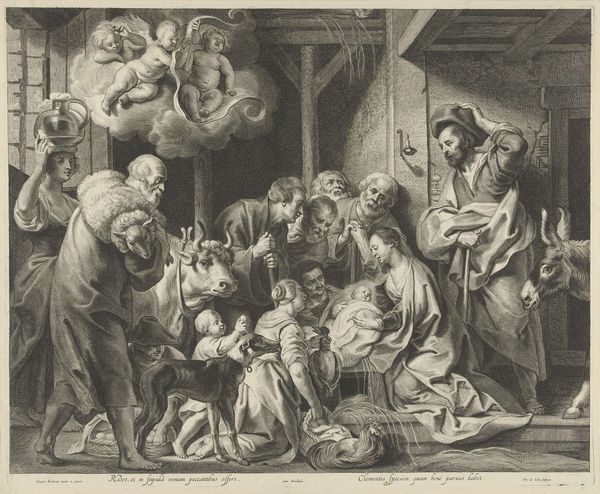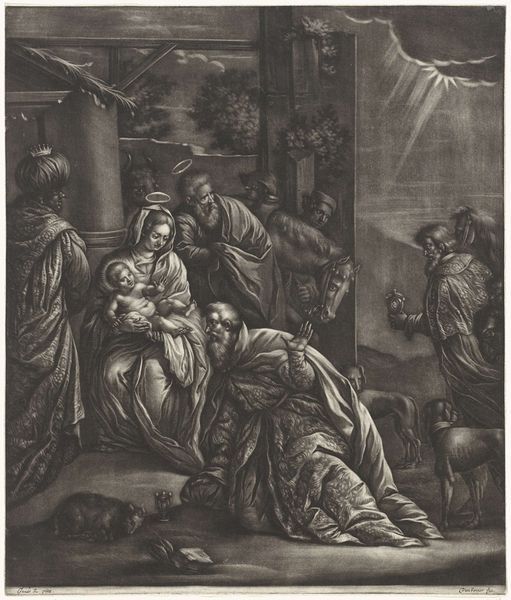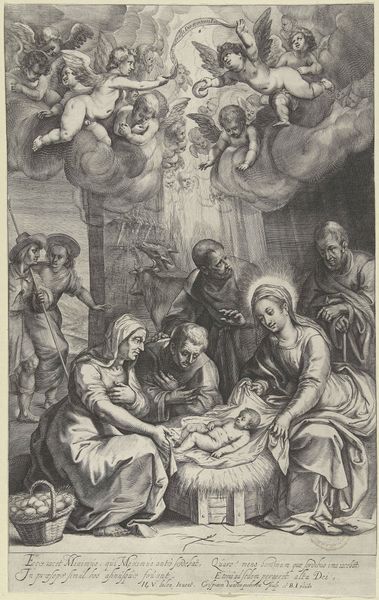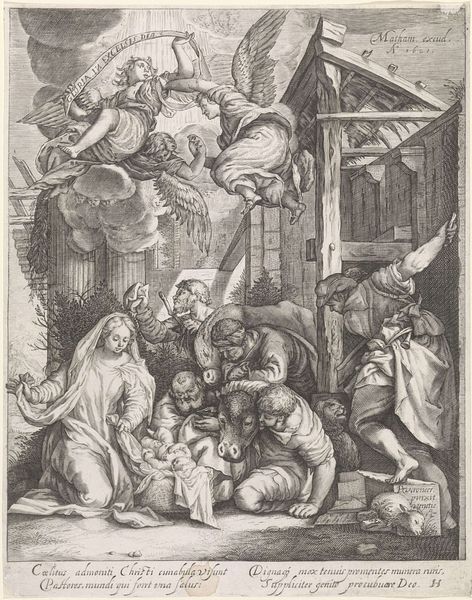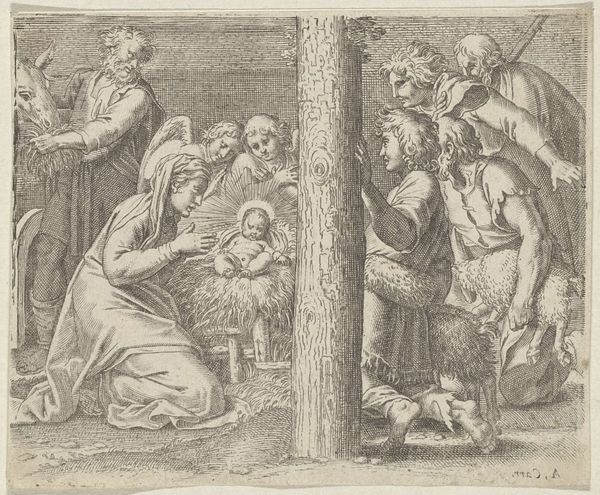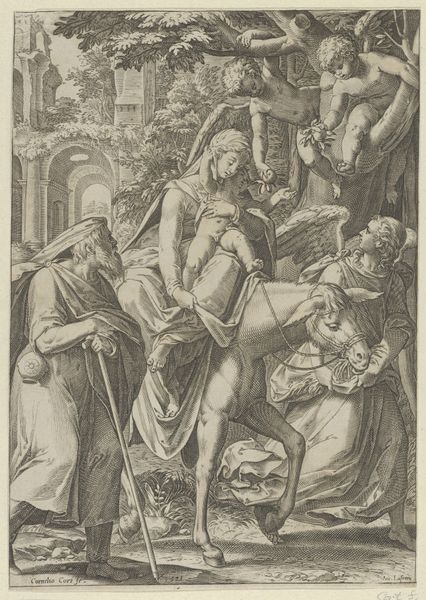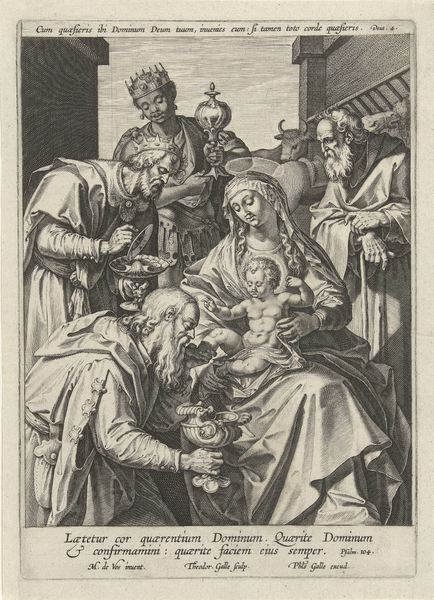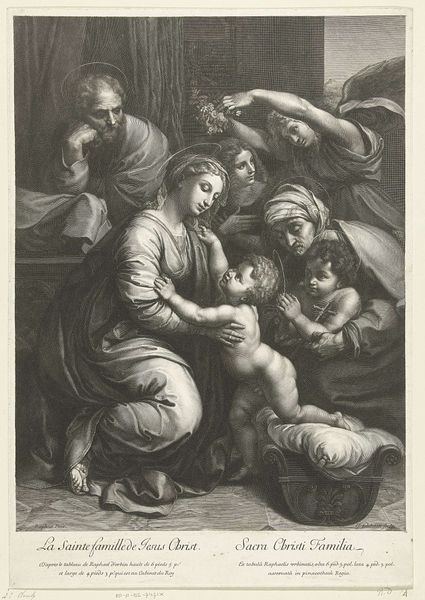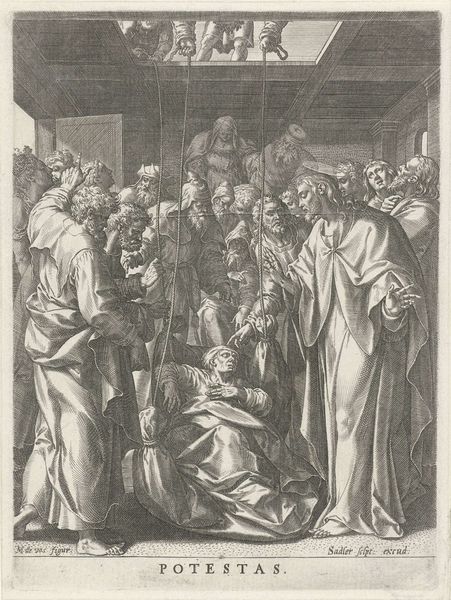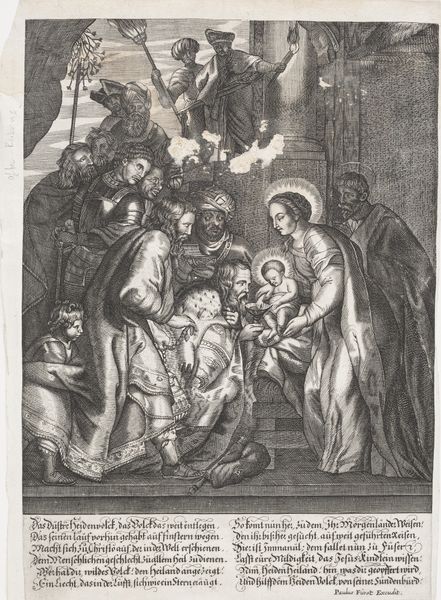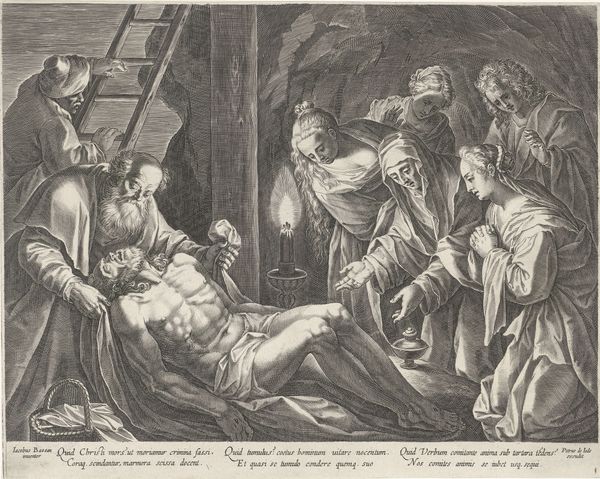
print, engraving
#
baroque
# print
#
figuration
#
group-portraits
#
history-painting
#
engraving
Dimensions: height 236 mm, width 138 mm
Copyright: Rijks Museum: Open Domain
Curator: This engraving presents the Adoration of the Magi, made sometime between 1619 and 1672 by Theodor van Merlen. The scene unfolds with a theatrical drama typical of the Baroque. Editor: It strikes me first as a study in textures and light. Look at how the lines of the engraving create highlights, drawing the eye to the central figures and the star. It feels balanced but also charged with a kind of restrained energy. Curator: Absolutely. Van Merlen situates this traditional religious subject within a very specific historical context, right? The presence of the Black magus is especially notable, reflecting perhaps the evolving global awareness and the art's role in representing intercultural encounters within a religious framework. Editor: I am more interested in the interplay between form and content here. See how the artist employs diagonals, guiding our gaze through the composition—from the star in the upper right to the infant Christ. The figures are grouped tightly, creating a sense of unity, even while maintaining individual expressiveness through detailed line work. Curator: But isn't that formal unity complicated by what is actually being depicted? We see not just devotion but the acknowledgement of power and a subtle negotiation of cultural differences, made visible in their dress and their presentation. It's about Baroque artistry, yes, but also the politics of representation. Editor: Indeed. The composition also subtly directs us to the reactions of Joseph and Mary, creating further emphasis through form to convey themes. Each element carefully constructed to elicit a considered response. It showcases devotion, represented by an acknowledgment of light in the figures looking at Christ. Curator: I agree and also think that looking at it now reminds me about historical power imbalances inherent in such depictions. How non-European figures are positioned can open interesting discussions about colonial narratives within religious art, especially when thinking about Black madonna traditions, something absent from many traditions, as we see them here. Editor: I suppose it is these dual aspects and considerations that keep the piece resonating today. Curator: Indeed. Bringing questions of form and cultural dialogue to bear in one image!
Comments
No comments
Be the first to comment and join the conversation on the ultimate creative platform.
